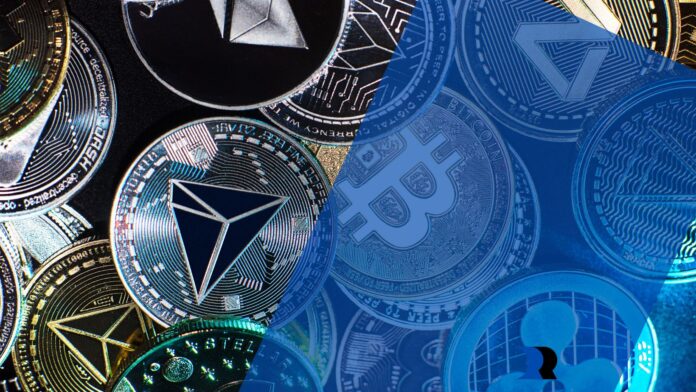The digital landscape is constantly evolving, with new technologies and concepts emerging to shape the way we interact and transact online. Two such concepts that have gained significant attention in recent years are metaverse tokens and traditional cryptocurrencies. While both are digital assets, they serve different purposes and operate within distinct ecosystems. Understanding the differences between metaverse tokens and traditional cryptocurrencies is essential for navigating the evolving digital economy. Amidst this evolution, platforms like aidefinity.org offer users a seamless experience in accessing and managing their digital assets, further enhancing the utility of these assets in the digital realm.
Understanding Metaverse Tokens
Metaverse tokens are digital assets that are used within virtual environments, such as the metaverse. The metaverse is a collective virtual space that is created by the convergence of physical and virtual reality, where users can interact with each other and digital objects. Metaverse tokens play a crucial role within these virtual environments, serving as a medium of exchange for goods and services, as well as a representation of ownership of virtual assets.
Examples of popular metaverse tokens include Decentraland’s MANA and The Sandbox’s SAND. These tokens are used to purchase virtual land, digital assets, and experiences within their respective metaverses. The value of metaverse tokens is derived from the demand for virtual goods and services within these virtual environments, as well as speculation on their future value.
Traditional Cryptocurrencies: Overview
Traditional cryptocurrencies, such as Bitcoin and Ethereum, are digital currencies that operate on decentralized networks based on blockchain technology. Unlike metaverse tokens, which are primarily used within virtual environments, traditional cryptocurrencies are used as a medium of exchange for goods and services in the real world. They can also be used for investment purposes, similar to traditional assets like stocks and bonds.
Technology and Infrastructure
The technology and infrastructure underlying metaverse tokens and traditional cryptocurrencies differ significantly. Metaverse tokens are typically built on blockchain platforms that are optimized for virtual environments, such as Ethereum and Flow. These platforms are designed to support the creation and exchange of digital assets within the metaverse, using smart contracts to automate transactions and enforce ownership rights.
Traditional cryptocurrencies, on the other hand, are built on more general-purpose blockchain platforms, such as Bitcoin and Ethereum. These platforms are designed to support a wide range of applications beyond virtual environments, including decentralized finance (DeFi), non-fungible tokens (NFTs), and smart contracts.
Utility and Functionality
The utility and functionality of metaverse tokens and traditional cryptocurrencies also differ. Metaverse tokens are primarily used within virtual environments for purchasing virtual goods and services, participating in virtual events, and owning virtual assets. They can also be used for social interactions, such as tipping and gifting.

Traditional cryptocurrencies, on the other hand, have a wider range of use cases. They can be used as a medium of exchange for goods and services in the real world, as well as for investment purposes. They can also be used for remittances, micropayments, and cross-border transactions, thanks to their borderless nature and low transaction fees.
Market Dynamics and Valuation
The market dynamics and valuation of metaverse tokens and traditional cryptocurrencies are influenced by different factors. Metaverse tokens are influenced by the growth and adoption of the metaverse, as well as the demand for virtual goods and services within these virtual environments. They are also influenced by speculation on their future value as investors anticipate the growth of the metaverse economy.
Traditional cryptocurrencies, on the other hand, are influenced by a wide range of factors, including market sentiment, regulatory developments, macroeconomic trends, and technological advancements. They are also influenced by their utility as a medium of exchange and store of value, as well as by speculation on their future value.
Regulatory Landscape
The regulatory landscape for metaverse tokens and traditional cryptocurrencies varies depending on the jurisdiction. In general, metaverse tokens are subject to less regulation than traditional cryptocurrencies, as they are primarily used within virtual environments and do not have the same impact on the real economy. However, regulators are increasingly focusing on the metaverse and may introduce regulations that impact the use and trading of metaverse tokens.
Traditional cryptocurrencies, on the other hand, are subject to more regulation due to their impact on the real economy. Regulators are concerned about issues such as money laundering, terrorist financing, and consumer protection, and have introduced regulations to address these concerns. These regulations vary by jurisdiction and can impact the use and trading of traditional cryptocurrencies.
Future Outlook and Potential
The future outlook and potential for metaverse tokens and traditional cryptocurrencies are influenced by their respective ecosystems and market dynamics. Metaverse tokens have the potential to play a significant role in the future of virtual environments, as the metaverse continues to grow and evolve. They could become a key medium of exchange for virtual goods and services, as well as a representation of ownership of virtual assets.

Traditional cryptocurrencies, on the other hand, have a more established ecosystem and a wider range of use cases. They have the potential to become a mainstream medium of exchange for goods and services in the real world, as well as a store of value and a means of investment. However, they also face challenges, such as scalability, regulatory scrutiny, and competition from other digital assets.
Conclusion
In conclusion, metaverse tokens and traditional cryptocurrencies are two distinct types of digital assets that operate within different ecosystems. While metaverse tokens are primarily used within virtual environments for virtual goods and services, traditional cryptocurrencies are used as a medium of exchange and store of value in the real world. Understanding the differences between these two types of digital assets is essential for navigating the evolving digital economy and identifying investment opportunities.


